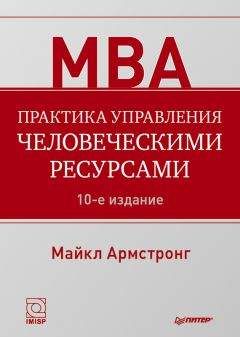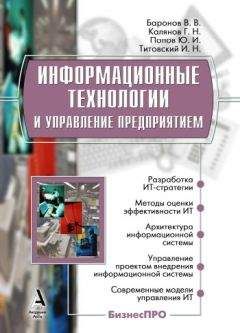Майкл Армстронг - Практика управления человеческими ресурсами
141. Cappelli P. A market-driven approach to retaining talent, Harvard Business Review, January/February, pp. 103–11, 2000.
142. Cappelli P. Making the most of on-line recruiting, Harvard Business Review, 70(3), pp. 134–48, 2001.
143. Cappelli P., Crocker-Hefter A. Distinctive human resources are firms’ core competencies, Organizational Dynamics, Winter, pp. 7–22, 1996.
144. Cappelli P., Singh H. Integrating strategic human resources and strategic management, in Research Frontiers in Industrial Relations and Human Resources, ed D, 1992.
145. Lewin О. Mitchell and P Scheller, Industrial Relations Research Association, Madison, Win.
146. Carter A., Hirsh W., Aston J. Resourcing the Training and Development Function, Report No 390, Institute of Employment Studies, Brighton, 2002.
147. Casson J. Re-evaluating Company Manpower Planning in the Light of Some Practical Experiences, Institute of Manpower Studies, Brighton, 1978.
148. Cattell R. В. The Sixteen Personality Factor Questionnaire, Institute for Personality and Ability Training, Illinois, 1963.
149. Cave A. Organizational Change in the Workplace, Kogan Page, London, 1994.
150. Centre for Workforce Development. The Teaching Firm: Where productive work and learning converge, Newton, MA, 1998.
151. CFO Research Services Human Capital Management: The CFO’s perspective, CFO Publishing, Boston, MA, 2003.
152. Chadwick С., Cappelli P. Alternatives to generic strategy typologies in human resource management, in P. Wright L., Dyer J. Boudreau and G. Milkovich (eds) Research in Personnel and Human Resource Management, JAI Press, Greenwich, CT, 1998.
153. Chamberlain N. W., Kuhn J. Collective Bargaining, McGraw-Hill, New York, 1965.
154. Chartered Institute of Personnel and Development Labour Turnover Report, CIPD, London, 2000.
155. Chartered Institute of Personnel and Development Developing Managers for Business Performance, CIPD, London, 2002.
156. Chartered Institute of Personnel and Development Code of Conduct for Equal Opportunities, CIPD, London, 2002.
157. Chartered Institute of Personnel and Development (2003a) Employee Absence, CIPD, London.
158. Chartered Institute of Personnel and Development Human Capital: External reporting framework, CIPD, London, 2003b.
159. Chartered Institute of Personnel and Development Reward Management 2003: A Survey of Polio/ and Practice, CIPD, London, 2003c.
160. Chartered Institute of Personnel and Development How to Develop a Reward Strategy, CIPD, London, 2004a.
161. Chartered Institute of Personnel and Development Human Capital Reporting: An internal perspective, CIPD, London, 2004b.
162. Chartered Institute of Personnel and Development Professional Standards, CIPD, London, 2004c.
163. Chartered Institute of Personnel and Development Survey of Recruitment, Retention and Turnover, CIPD, London, 2004d.
164. Chartered Institute of Personnel and Development How to Develop a Reward Strategy, CIPD, London, 2004e.
165. Chartered Institute of Personnel and Development Bullying at Work: Beyond policies to a culture of respect, CIPD, London, 2005a.
166. Chartered Institute of Personnel and Development Managing Diversity, CIPD, London, 2005b.
167. Chartered Institute of Personnel and Development Recruitment, Retention and Turnover Survey, CIPD, London, 2005c.
168. Chartered Institute of Personnel and Development Reward Survey, CIPD, London, 2005d.
169. Chartered Institute of Personnel and Development Training and Development Survey, CIPD, London, 2005e.
170. Chell E. Participation and Organisation, Macmillan, London, 1985.
171. Chell E. The Psychology of Behaviour in Organisations, Macmillan, London, 1987 .
172. Child J. Organization: A guide to problems and practice, Harper & Row, London Chiumento, 2004. Get Engaged, Chiumento, London, 1977.
173. Clegg H. The System of Industrial Relations in Great Britain, Blackwell, Oxford, 1976.
174. Clutterbuck D. Everyone Needs a Mentor, CIPD, London, 2004.
175. Coleman J. S. Foundations of Social Theory, University of Harvard Press, 1990.
176. Cambridge M. A. Competency and Emotional Intelligence. Raising performance through competencies: the tenth benchmarking survey, 2003/4.
177. Cook M. (1993) Personnel Selection and Productivity, Wiley, Chichester.
178. Cooke R., Lafferty J. Organizational Culture Inventory, Human Synergistic, Plymouth, MI, 1989.
179. Cooper С. In for the count, People Management, 12 October, pp. 28–33, 2000.
180. Cooper R. Task characteristics and intrinsic motivation, Human Relations, August, pp. 387–408, 1973.
181. Coopey J., Hartley J. Reconsidering the case for organizational commitment, Human Resource Management Journal, 3, Spring, pp. 18–31, 1991.
182. Council for Excellence in Management and Leadership. Report on Human Capital Reporting, CEML, London, 2002.
183. Cox A., Purcell J. Searching for leverage: pay systems, trust, motivation and commitment in SMEs, in Trust, Motivation and Commitment, ed S. J. Perkins and St. John Sandringham. Strategic Remuneration Centre, Faringdon, 1998.
184. Cyert R. M., March J. G. A Behavioural Theory of the Firm, Prentice-Hall, Englewood Cliffs, N J, 1963.
185. Daft R. L., Weick К. Е. Towards a model of organisations as interpretation systems, Academy of Management Review, 9, pp. 284–95, 1984.
186. Dale M. Learning organizations, in С. Mabey and P. lies (eds), Managing Learning, Routledge, London, 1994.
187. Daniels А. С. What is PM? Performance Management, July, pp. 8–12, 1987.
188. Davenport T. H. Why re-engineering failed: the fad that forgot people, Fast Company, Premier Issue, pp. 70–74, 1996.
189. Davenport T. О. Human Capital, Jossey Bass, San Francisco, CA, 1999.
190. Davenport T. H., Prusak L. Working Knowledge: How organizations manage what they know, Harvard Business School Press, Boston, MA, 1998.
191. Davis L. E. The design of jobs, Industrial Relations, 6, 1966.
192. Deal T., Kennedy A. Corporate Cultures, Addison-Wesley, Reading, MA, 1982.
193. Deary I. J., Matthews G. Personality traits are alive and well. The Psychologist, 6, pp. 299–311, 1993.
194. Delaney J. T., Huselid M. A. The impact of human resource management practices on perceptions of organizational performance, Academy of Management Journal, 39(4), pp. 949–969, 1996.
195. Delery J. E., Doty H. D. Modes of theorizing in strategic human resource management: tests of universality, contingency and configurational performance predictions, International Journal of Human Resource Management, 6, pp. 656–670, 1996.
196. Deloitte & Touche and Personnel Today. Measuring Human Capital Value, 2002 Survey, Deloitte & Touche /Personnel Today, London deLong T. and Vijayaraghavan V. Let’s hear it for В players, Harvard Business Review, June, pp. 96–102, 2003.
197. Deming W. E. Quality, Productivity and Competitive Position, MIT Centre for Advanced Engineering Study, Cambridge, MA, 1982.
198. Deming W. E. Out of the Crisis, MIT Centre for Advanced Engineering Study, Cambridge, MA, 1986.
199. Denison D. R. What is the difference between organizational culture and organizational climate? A native’s point of view on a decade of paradigm wars, Academy of Management Review, July, pp. 619–54, 1996.
200. Digman L. A. Strategic Management – Concepts, Decisions, Cases, Irwin, Georgetown, Ontario, 1990.
201. Dowling P. J., Weech D. E., Schuler R. S. International Human Resource Management: Managing people in a multinational context, South Western College Publishing, Cincinnati, OH, 1999.
202. Drucker P. The New Society, Heinemann, London, 1951.
203. Drucker P. The Practice of Management, Heinemann, London, 1955.
204. Drucker P. The Effective Executive, Heinemann, London, 1967.
205. Drucker P. The coming of the new organization, Harvard Business Review, January /February, pp. 45–53, 1988.
206. Drucker P. Post-Capitalist Society, Butterworth-Heinmann, Oxford, 1993.
207. Drucker P. The information executives truly need, Harvard Business Review, January–February, pp. 54–62, 1995.
208. Dulewicz V. Assessment centres as the route to competence, Personnel Management, November, pp. 56–59, 1989.
209. Dulewicz V., Higgs M. The seven dimensions of emotional intelligence, People Management, 28 October, p. 53, 1999.
210. Duncan С. Pay and payment systems, in В Towers (ed) AHandbook of Industrial Relations Practice, Kogan Page, London, 1989.
211. Dunlop J. T. Industrial Relations Systems, Holt, New York, 1958.
212. Dyer L., Holder G. W. Strategic human resource management and planning, in L Dyer (ed) Human Resource management: Evolving roles and responsibilities, Bureau of National Affairs, Washington, DC, 1998.
213. Dyer L., Reeves T. Human resource strategies and firm performance: what do we know and where do we need to go? The International Journal of Human Resource Management, 6(3), September, pp. 656–70, 1995.
214. Eagleton T. Literary Theory. Blackwell, Oxford, 1983.
215. Easterby-Smith M. Disciplines of organizational learning: contributions and critiques, Human Relations, 50(9), pp. 1085–1113, 1997.
216. Easterby-Smith M., Araujo J. Organizational learning: current opportunities, in Organisational Learning and the Learning Organization, ed M Easterby-Smith, Sage, London, 1997.
217. The Economic and Social Research Council and the Tomorrow Project. Workers on the Move, ECRS, London, 2005.
218. Edenborough R. Using Psychometrics, Kogan Page, London, 1994.
219. Edvinson L., Malone M. S. Intellectual Capital: Realizing your company’s true value by finding its hidden brainpower, Harper Business, New York, 1997.
220. Edwards M. R., Ewen A. T. 360-degree Feedback, American Management Association, New York, 1996.
221. Edwards M. R., Ewen A. T., O’Neal S. Using multi-source assessment to pay people not jobs, АСА journal, Summer, pp. 6–17, 1994.
222. Egan G. The Skilled Helper: A systematic approach to effective helping, Brooks Cole, London, 1990.
223. Egan G. A clear path to peak performance, People Management, 18 May, pp. 34–37, 1995.
224. Eggert M. Outplacement: A guide to management and delivery, Institute of Personnel Management, London, 1991.
225. Ehrenberg R. G., Smith R. S. Modern Labor Economics, Harper Collins, New York, 1994.
226. Eldridge J., Crombie A. The Sociology of Organizations, Allen & Unwin, London, 1974.
227. Elliot L. Dealing with the dirty end of jobs for life, The Guardian, 23 April, p. 14, 1996.
228. Elliott R. F. Labor Economics, McGraw-Hill, Maidenhead, 1991.
229. Emery F. F. Designing socio-technical systems for greenfield sites, Journal of Occupational Behaviour, 1(1), pp. 19–27, 1980.
230. Engelmann С. Н., Roesch С. Н. Managing Individual Performance, American Compensation Association, Scottsdale, Arizona, 1996.
231. Equal Opportunities Commission Good Practice Guide – Job Evaluation Free of Sex Bias, EOC, Manchester, 2003.
232. Equal Opportunities Commission. Illustrated Advertisements, EOC, Manchester, 2004.
233. Eraut M. J., Alderton G., Cole G., Senker P. Development of knowledge and skills in employment, 1998. Economic and Social Research Council, London e-reward (2003). Survey of Job Evaluation, e-reward.co.uk, Stockport e-reward (2004a). Reward Case Studies, e-reward.co.uk, Stockport e-reward (2004b). Survey of Contingent Pay, e-reward.co.uk, Stockport e-reward (2004c). Survey of Pay Structures, e-reward.co.uk, Stockport e-reward (2005). Survey of Performance Management, e-reward.co.uk, Stockport.




